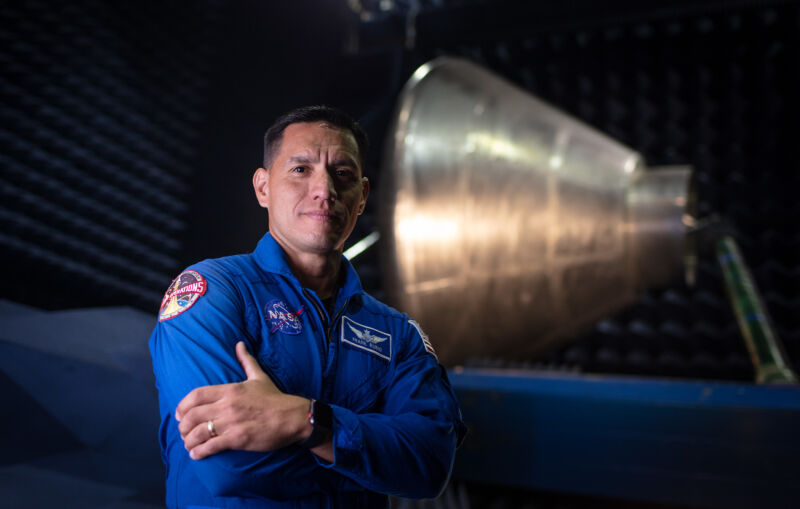Amid much fanfare, NASA astronaut Scott Kelly returned from space nearly seven years ago, landing on a barren, frozen steppe of Kazakhstan inside a hardy little Soyuz spacecraft.
NASA made much of this flight, billing it as the agency's first year-long mission. PBS was among the broadcast television stations that did extended features on Kelly's mission, its multi-episode series was titled "A year in space." But the dirty little secret is that, due to the inevitable shuffling of schedules in spaceflight, Kelly and a Russia colleague, Mikhail Kornienko, spent 340 days in space rather than a full year of 365.25 days.
After Kelly's mission, NASA health officials said they hoped to fly more one-year missions as they sought to better understand the biological effects of long-duration spaceflight on humans and how the agency might better mitigate bone loss and other deleterious effects.
These missions, at least by planning, have not happened. However, largely by the vagaries of scheduling, NASA astronauts have spent long periods of time on the International Space Station since Kelly's pioneering flight.
Peggy Whitson spent 289 days in space from late 2016 to 2017 after her planned six-month mission was extended due to a realignment of Russian launch schedules. Then, from 2019 to 2020, Christina Koch spent nearly 329 days in space. She broke Whitson's record for the longest single spaceflight by a woman and conducted four spacewalks. Koch knew an extended mission was a possibility before she launched in 2019 on a Soyuz vehicle, but the scheduling decision—to free up a Soyuz seat for the United Arab Emirates’ first astronaut, Hazza al-Mansoori—was not made until she was living on board the space station.
When Mark Vande Hei launched to the space station in April 2021, he was planning for a six-month mission. But again, the Russians shuffled the schedule in order to use a Soyuz spacecraft to make a movie on the station. So instead of launching a replacement crew on Soyuz MS-19, film director Klim Shipenko and actress Yulia Peresild flew to the station on that spacecraft, along with cosmonaut Anton Shkaplerov.
With this extended mission, Vande Hei spent 355 days in space and currently holds the record for longest-duration spaceflight by an American astronaut. But still, he did not spend a full year in space.
That may now finally happen, however. On Tuesday, a senior official in NASA's International Space Station Program, Dina Contella, said during a news briefing that the crew of the damaged Soyuz spacecraft would now "probably" come back to Earth in late September.
Cosmonauts Sergey Prokopyev and Dmitri Petelin and NASA's Frank Rubio launched on the Soyuz MS-22 vehicle on September 21, 2022. The mission was due to return this spring, but after a micrometeorite strike in December, the vehicle's external cooling loop was damaged. (Russian officials are convinced it was a micrometeorite rather than orbit debris due to the high velocity of the strike and its unlikely impact vector.)
As a result, this three-person crew will now return to Earth on a new Soyuz vehicle, MS-23, that will launch and fly autonomously to the station next month. Because the next Soyuz crew spacecraft will not be ready for flight until the fall, this will delay the launch of a replacement crew. A source said that at present, NASA's internal schedule calls for this Soyuz MS-23 vehicle to return to Earth after September 21, 2023.
With the caveat that such schedules are invariably fluid and emergencies are always possible, this means Rubio is presently on course to spend more than a full year in space—becoming the first NASA astronaut to do so. It's a nice and unexpected feat for the first-time flyer, who only joined NASA in 2017 and is the space agency's first astronaut of Salvadoran origin.
The current record for longest-duration spaceflight is out of reach. Valery Polyakov spent 438 days on the Mir space station in the 1990s. This record is unlikely to be broken for a long time. However, if the return of Soyuz MS-23 slips a bit, second place on this list could be in play for Rubio and his two crew mates. That mark is held by cosmonaut Sergey Avdeev, who spent 379 days on Mir in the late 1990s.



3175x175(CURRENT).thumb.jpg.b05acc060982b36f5891ba728e6d953c.jpg)

Recommended Comments
There are no comments to display.
Join the conversation
You can post now and register later. If you have an account, sign in now to post with your account.
Note: Your post will require moderator approval before it will be visible.